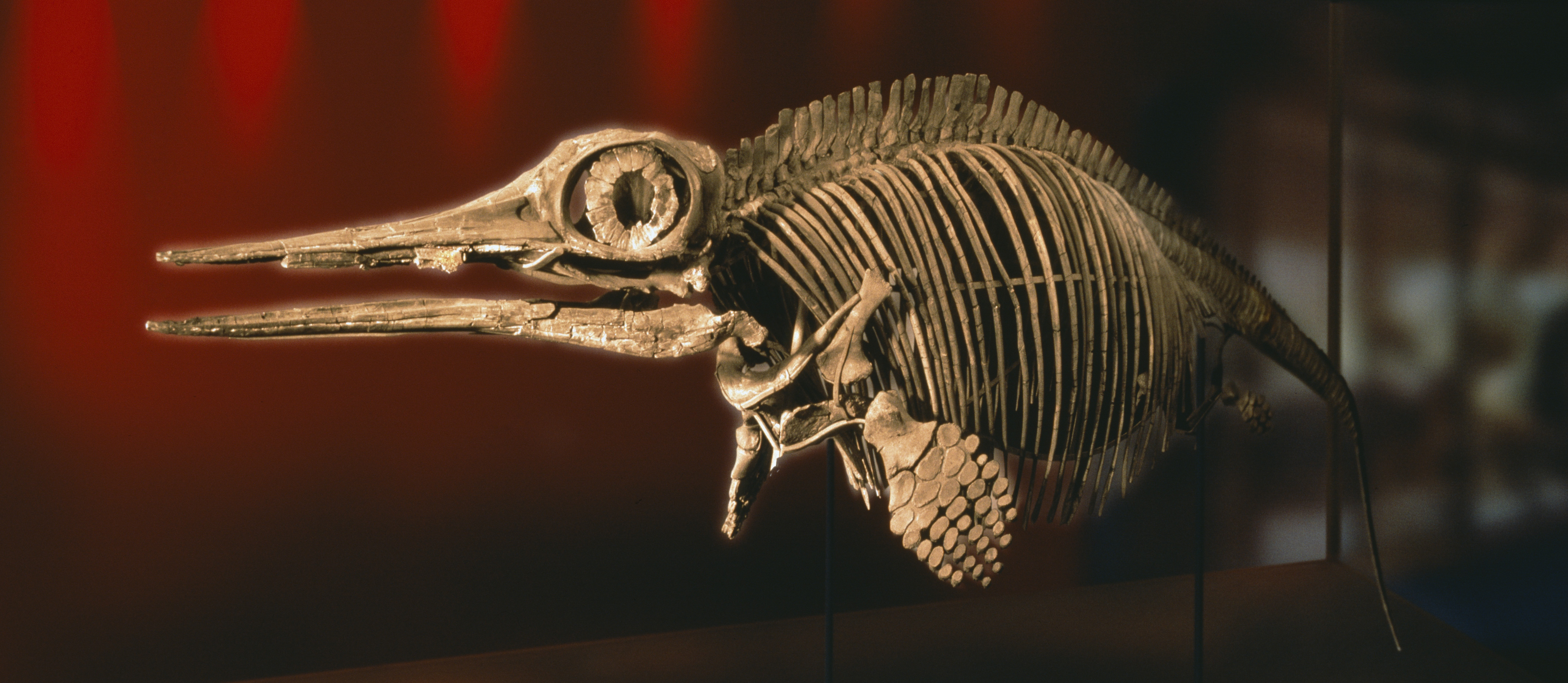Caspian paleontologists have uncovered what they believe to be the predecessor of all marine reptiles once inhabiting the sea, and the most ancient ichthyosaur of the Mesozoic era, which was alive between 252 and 66 million years ago.
The ichthyosaur, which most likely inhabited the waters of what is now the third longest river in Europe, the Ural, was a predator with a skull reaching two meters in length and a rib cage amounting to one meter in diameter. Fossil evidence suggests that the reptile found in Kazakhstan had eyes 20 centimeters in diameter, more than five times that of similar-sized extant marine mammals.
The skeletal remains of the prehistoric reptile, whose length stretched to nearly seven meters, was initially found in the northwestern city of Uralsk in Kazakhstan in 2016, by a team of amateur geologists.
Anton Rublevsky, the fossil’s finder, still cannot believe he was the first to see the bones of an extinct animal from an era long ago.
“At first I thought it was a white stone,” Rublevsky recalls, according to Caravan.kz.
“We immediately began to dig further. And I was lucky again. I found a giant bone weighing at least two kilograms.”
Ichthyosaurs are large marine reptiles that used to thrive during much of the Mesozoic era. Based on fossil evidence, they first appeared around 250 million years ago and at least one species survived until about 90 million years ago.
Paleontologists became interested in the fossil discovered in Kazakhstan after it was showcased in 2017 at a congress of amateur geologists from Commonwealth of Independent State (CIS) countries, which was held in Kazakhstan.
To further study the remains, Kazakhstan has invited Vladimir Efimov from Russia, a member of the Paleontological Society, who claimed this ichthyosaur to be the most ancient to live in the Mesozoic era.
Dr. Efimov says the marine creature cannot be identified with any known family of ichthyosaurs, and this previously unknown reptile that was found nearly the Ural River has yet to get a new name.
“We have [already] found the remains of dinosaurs on the territory of Russia, but it turned out that the ichthyosaur of western Kazakhstan is even more ancient,” Efimov said. “This is the first find of that kind in the territory of Kazakhstan.”
Meanwhile, the historical discovery gave impetus for Kazakhstan to launch a paleontological reserve in Uralsk. Local authorities will determine the limits and boundaries for the planned reserve, and later researchers will conduct excavations within it.
“It is possible that other species of ichthyosaurs will be found,” the head of the Kazakhstan-based center for tourism and ecology, Viktor Fomin told Kazinform.
Russia, another Caspian region country, is also known for major findings in paleontology.
An ichthyosaur found in 2007 in Russia’s southwestern Ulyanovsk region, located near the Volga River, was named Leninia stellans in honor of Vladimir Lenin, a native of the region and leader of the Bolshevik revolution, which founded the Soviet Union.
Fossil evidence suggests that Leninia was almost nine meters in length and was likely one of the largest predators of its time. The reptile is believed to be somewhere between 113 and 19 million years old, which makes him younger than remains found in Kazakhstan.
The very first remains of an ichthyosaur was found in the English coastal city of Lyme Regis in 1811.







 Armenian sappers commenced on Monday mine-clearance operations in the territories adjacent to the Saint Mary Church in village of Voskepar (Armenia...
Armenian sappers commenced on Monday mine-clearance operations in the territories adjacent to the Saint Mary Church in village of Voskepar (Armenia...
 The Mine Action Agency of Azerbaijan (ANAMA) reported on Thursday the discovery of a significant amount of explosives in the Khojavand district of ...
The Mine Action Agency of Azerbaijan (ANAMA) reported on Thursday the discovery of a significant amount of explosives in the Khojavand district of ...
 Iran’s Foreign Minister, Hossein Amir-Abdollahian, has labeled a foiled Israeli drone attack in certain parts of the country as a "failure" for Isr...
Iran’s Foreign Minister, Hossein Amir-Abdollahian, has labeled a foiled Israeli drone attack in certain parts of the country as a "failure" for Isr...
 Iran has refuted reports of alleged damage to Shimon Peres Negev Nuclear Research Centre located southeast of Dimona, Israel, during the recent air...
Iran has refuted reports of alleged damage to Shimon Peres Negev Nuclear Research Centre located southeast of Dimona, Israel, during the recent air...



